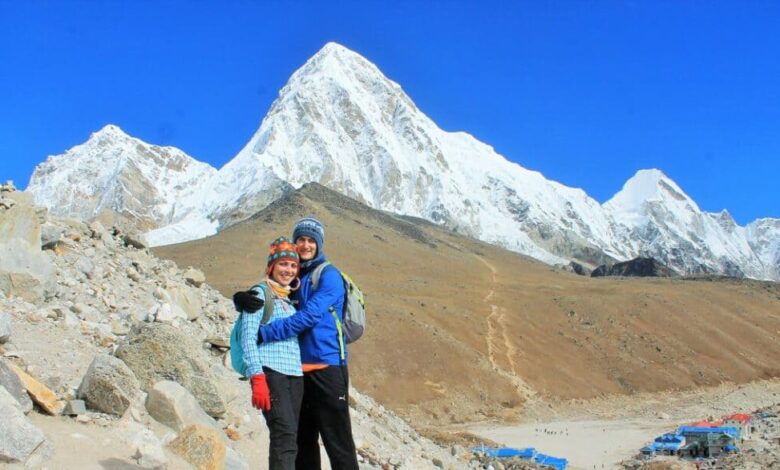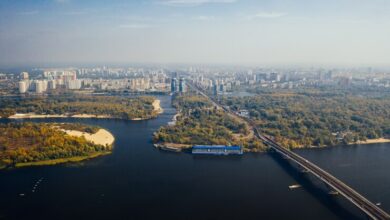A Sherpas Guide to Conquering the EBC Trek

A Sherpa’s Guide to the Everest Base Camp (EBC) trek is about more than just leading trekkers along a rocky trail to one of Earth’s most famous spots. It is about living the mountains, knowing all that goes into high-altitude climbing and making sure every single person entering the heart of Himalayas comes back with success and safety. The Everest trek is impossible without the sherpas, locals of the Khumbu region who are the backbone of all treks up sagarmatha, providing awareness, skill and support in a journey to remember.
The Sherpas are arguably the most skilled and knowledgeable mountain guides in the world when it comes to Nepalese terrain, particularly at Everest. The depth of their knowledge of the land, along with reading weather and understanding changes in high altitude trekking are a must-have for anyone attempting to do the EBC trek. Everest-base camp-trek-full-discovery The trek to Everest Base Camp is a grueling undertaking involving rapidly changing altitudes, inclement weather conditions, and difficult terrain. With their incredible skills, Sherpas also guide trekkers away from such obstacles and try to make this journey smooth for them. They understand that acclimatisation is key, that it is crucial to walk up slowly to eliminate the risk of altitude sickness and they do their job as guides and guardians of your safety.
One of the most important parts of any trek is acclimatization. Higher in altitude the amount of available oxygen decreases, leading to discomfort and sickness for trekkers and so Sherpas plan the trek itself around good acclimatization. Under their guidance, trekkers are taken slowly with rest days in places such as Namche Bazaar and Dingboche where the body has a chance to acclimatise to a higher altitude before moving on. Sherpas know how to spot the early signs of altitude sickness and can quickly decide whether a trekker needs to slow down or descend.
Even beyond the physical safety they provide, Sherpas are cultural ambassadors who share with trekkers a greater appreciation of the rich culture of Khumbu. Sherpa people are closely associated with the mountains and practice Buddhism. As trekkers make their way up, Sherpas educate them on the importance of monasteries and sacred sites; as well as small prayer flags. Usually, the guides will recount local folk stories, legends and historical events; offering a cultural side to the trek that would be otherwise lost.
Chasing the EBC trek: A guide from a Sherpa not only celebrates reaching your destination, but also embraces what it means to get there. It is about getting through the obstacles – acclimatizing to high elevation, and finding your way back into a symbiosis with the people and places that make the trip special. An adventure with a Sherpa is not just a hike to EBC, but it becomes a journey with great spiritual and cultural significance blended with physical achievement making the climb to Everest Base Camp worth as one of the most special transforming experiences in life.
The Heart of the EBC Trek – Introduction
The trek to Everest Base Camp (EBC) is one of the most famous and difficult expeditions in trekkers’ arsenal, beckoning thousands of adventurers around the world every year. The trek is not only about standing at the base of the tallest mountain on earth but also to appreciate, embrace and explore in-depth one of the most beautiful landscapes and rich life cultures existing together in any other corner of this planet within a 10-14 days adventure. Along the way, you will traverse verdant forests, high-altitude arid lands, charming Sherpa Settlements and beautiful Buddhist monasteries that makes the EBC trek more appealing.
The journey tenor the destination is as much about self discovery Endurance, resilience and determination get tested through all the physical and mental challenges here. The base camp journey rewards you with the result of entering in to worlds most arduous terrains for days but is also a place to reflect and connect with nature. Trekkers fight altitude, weather and fatigue to reach this milestone —every step toward Everest Base Camp is a footfall on the road of human resolve. The EBC trek is not just a physical challenge but also an emotional and spiritual one for many seeking a deep experience connected to the culture and amazing splendor of the Himalayas.
The Importance of a Sherpa Guide for Your EBC Trek
This is where a good sherpa guide comes into play as the key to success and safety on your Everest Base Camp trek Weather. The Sherpa people, who are indigenous to the Khumbu region of Nepal, have ancestral wisdom of their native land and the difficulties posed by altitude and harsh weather conditions within the Himalayas. The Sherpas, who have years of experience navigating the rugged paths and high altitudes, are fully qualified to make sure trekkers get there safely.
Sherpas are experts when it comes to leading trekkers through unforgiving lands, and perfecting their skills for high-altitude first aid training is a given. They are well-versed in the initial symptoms of altitude sickness that can be fatal if handled poorly. So their understanding of acclimatization methods ensures trekkers take the appropriate pace as they move upwards so that the body has time to adjust to the thin air. This is where a Sherpa comes into the picture: their knowledge in these fields drastically minimises the risk of high altitude trekking-related issues like altitude sickness or simple tiredness.
Apart from their hands-on skills, Sherpas provide insight into the culture. They know the Sherpa culture, Tibetan Buddhism, and the importance of sacred sites along the way. Sherpas act as intermediaries between trekkers and the local culture, bridging the gap to provide insight into the culture and spirituality behind why this region is so significant. They are essential to ensure that your EBC trek is fruitful and safe.
Preparing For the Trek: What to Know Before You Go
The Everest Base Camp (EBC) trek is a demanding journey that requires proper preparation to successfully complete. It is where the physical training, mental preparation and application of experience comes together. Among the first of many things you must do when preparing for the trek is get yourself into physical shape. The EBC trek is strenuous, requiring long hours of walking through different terrains along with trekking through high altitudes where the level of oxygen is several times lower. That is why you should build up endurance with regular cardio work such as going for a hike or run, or riding your bike. Weight training can also condition the body to handle the load of trekking with a backpack and dealing with rugged terrain.
The mental aspect is just as important. The trek itself is physically a little demanding, and the altitude will wear you down; however, it can be avoided with some effort. When faced with daily challenges, resilience of the mind and an optimistic approach will be your best friends. Know the challenges of the trek, from altitude sickness to changeable weather and emotional peaks and troughs
Bringing the appropriate equipment is critical to assure comfort also security, A good sleeping bag, a reasonable set of warm and changeable weather clothes, sturdy shoes for hiking, and warm layers are essential gear. Carrying a water purification system and high-energy snacks would also be advised to keep oneself hydrated and energized during the trek. Finally, please contact a Sherpa Guide or Trekking Agency to ensure that the arrangements are in accordance with trekking needs.
Trekking Route: Highlights and Major Stops
The EBC trek Cost is a classic, multi-day walk which traverses diverse terrain; acquiring its own distinct beauty and highlights in each section. It all starts with a flight to Lukla from Kathmandu — a tiny mountain airport. Trekker from here drop down to the Dudh Koshi River valley and make their way to Phakding, where the first of many nights is spent. It is a good introduction to the trek, as the path here is quite gentle.
The next major stop along the way is Namche Bazaar, known as the “Gateway to Everest.” It is a busy market town where trekkers can breathe easy, acclimatize to the surrounding environment and buy supplies Namche is also the place where trekkers first start to see Everest and other peaks nearby. Next up, it is onward to Tengboche — famous for its monastery and spectacular views of Everest and company. This monastic hilltop location is peaceful and gives you an opportunity to contemplate.
From there, the trekkers move upwards again up to Dingboche and then Lobuche and Gorak Shep, only to touch down in Everest Base Camp. With every stop, trekkers get closer to their goal while enjoying the breathtaking views of majestic mountains such as Lhotse, Makalu and Ama Dablam on the way. Undoubtedly, the best part of the trek is being at Everest Base Camp overlooking his gigantic icefalls while Mount Everest reigns over one(24,000 feet). Just completing such a profound journey with hopes for background memories spawns eternal carriage.
Getting Acclimatized: The Sherpa Secret For Trekking Safety
Acclimatization, of course, is a critical component to the EBC trek as trekkers gain in altitude among rarefied air. Acclimatization needs to occur, and without it altitude sickness can develop (and can be fatal). Sherpa acclimatization is a controversial, but systematic method of gradual ascent with recovery days for the body to adapt its physiology.
One of the corner stones of the Sherpa method is this: climb high, sleep low. This means that studs will typically going up higher during the day and down lower at night to sleep. This is an effective method for the body to adapt without putting too much strain on it. For example, after arriving at Namche Bazaar you have a rest day, but then go for a short walk up high to aid resting. In Dingboche, again an acclimatization day is taken but this time the hike is to Nagarjun Hill: closer to the Denali summit to await altitude adjustment without stalling progress.
Sherpas, who are well-acclimated to high altitudes and have the most time spent trekking in an environment at these elevations so they’re much more aware of altitude sicknesses bajas a trekkers possible symptoms. They are trained to identify early signs of problems — dizziness, fatigue or headaches — and can tailor the pace accordingly or advise heading down if necessary. With their experience and expertise, they make sure that trekkers adopt an efficient and safe acclimatization strategy to avoid the potential pitfalls of high altitude trekking while increasing the odds of summiting EBC. Trekkers can travel safely to Everest Base Camp fully dak you through the journey without anxiety and worries by sticking to these guidelines.
What to Pack: Tips on Packing from a Sherpa
Amongst the most vital aspects of preparing for the Everest Base Camp (EBC) trek is to pack right and smart. Sherpas know what to pack because their experts in the area. The most important thing for trekkers is a good quality trekking boot that is tough enough because the path will be rocky, slippery and uneven. In addition to durable shoes, you will need socks that keep moisture away from your skin, a lightweight but warm sleeping bag (under zero degrees) and hiking pants suitable for walking.
In the unpredictable climate of the Himalayas, layering is key. Layers recommended by Sherpas include a moisture-wicking base layer, an insulating mid-layer (like fleece) and an outer layer that is waterproof and windproof. Given how quickly the conditions can shift, you need to plan for frigid nights as well as hot days. You also need accessories such as a decent pair of gloves, a hat to prevent sun burn and warm scarf or buff for the evening air.
Trekking poles will support you in maintaining balance on steep and rocky terrain, while a headlamp is necessary for pre-dawn starts and post-sunset explorations. Sherpas also emphasize the need for a good water purification system not only because clean water is important but it can be difficult to access in remote areas. Finally, having a first-aid kit loaded with the darn essentials (pain relief medications, blister meds, altitude sickness medication) is so necessary. This equipment allows trekkers to guarantee a comfortable yet all equiped walking through the wild mountainscape of Khumbu.
Sherpas: The Guides, Porters & Cultural Ambassadors
Renowned for being among the best trekking guides in the world, Sherpas provide crucial and indispensable role to successfully accommodate EBC trek. Sherpas, known for their exceptional physical endurance, mastery of the Himalayan terrain, and as cultural symbols of the region, serve as guides, porters and cultural ambassadors who contribute to the safety and comfort of trekkers while giving them a deeper understanding of their surroundings.
Sherpas provide their guidance in the most treacherous terrain – the Himalayas. Leading trekkers on high-altitude trails, rocky paths and precarious mountain slopes with in-depth knowledge of the terrain as well as experience of battling against unpredictable weather conditions. It ensures trekkers move through the right paths, do not enter into any restricted or dangerous area and maintain proper pace for a safe ascent and descent.
Along with being guides, Sherpas also act as porters. They take the cumbersome equipment and supplies that travellers want to hold: alleviating the pressure of the journey. Which means trekkers can trek while Sherpas get all the gear, food and supplies to where they are needed with ease.
But in addition to their physical duties, Sherpas are cultural ambassadors. Their unique connection with the mountains and centuries of Buddhist heritage impart lessons to trekkers sharing their life through the Sherpa people. Sherpas make the journey real, from spanning these monasteries and prayer flags to local customs and traditions. The involvement of Sherpas in commercial trekking also enables trekker to experience culture and the Khumbu region beyond just a simple adventure trek.
Challenges due to Terrain & Weather: The Himalayan Khumbu Region
This trek is a popular adventure which leads trekkers through the rugged and often unpredictable weather of the Khumbu region on their way towards Everest Base Camp (EBC). Trekkers must understand these challenges as well to remain safe and finish the journey.
The Khumbu region showcases terrain that varies from lush and forested at lower elevations, to barren and rocky as you approach the Everest Base Camp. Trek routes frequently wind along slim ridgelines, through thick foliage and over steep hillsides that are particularly treacherous in the rainy season, or early morning when frost forms on the path. Without a solid grip, every step downhill can be treacherous too — and maintaining focus to avoid letting your mind drift is vital! The altitude adds layers of difficulty to the already rough terrain, as lack of oxygen makes hikers tired and decreases pace.
Trekkers also have to deal with the changing weather of the Himalayas in addition to the terrain. Day and night temperatures may vary, with freezing temperature in the highlands and warm weather in lower places. Travel may be suddenly disrupted due to changing weather with snowstorms, rain or high winds. This is where you need the guidance of an experienced sherpa. Serpahs are able to read the weather patterns and change according to the trekking needs. As a result, trekkers can know what circumstances they should be prepared for.
This pinnacle offer a breathtaking view from the summit, their huge rocks combined with unpredictable weather together make EBC trek not only challenging but also daunting. However, with proper preparation, enough equipment, and the right Sherpa to guide you through the Khumbu area–you can reach either Everest Base Camp or even get on your way to summiting the impressive mountain itself!
From Sherpas Who Know: How to Deal With Altitude Sickness
One of the main issues that trekkers face while going into high-altitude environments are altitude sickness or acute mountain sickness (AMS) which is a common problem in EBC trek. The challenge of altitude sickness arises as the body begins to adapt to breathing thinner air with lower oxygen levels, and symptoms including headaches, dizziness, nausea and fatigue can take over any trekking effort: managing this effect is one of the great MacGuffins of the trek – experienced Sherpas navigating trekkers through these symptoms.
Sherpas are exactly aware of all the signs for altitude sickness and they know that you must go slowly about before you get used to it. Their approach to trekking is climb high, sleep low: meaning people trek to higher altitudes during the day but return at night to lower ones to sleep. This allows the body to acclimatise to the height without overexerting it. Free acclimatization days at critical hubs like Namche Bazaar and Dingboche allow trekkers to safely adapt to rising altitudes.
They also advise to drink a lot of water and eat high-calorie foods to prevent altitude sickness, because both are very important in that regard as you can imagine. The other component is rest and not overdoing things, as too much physical exertion can make the symptoms worse. In case altitude sickness creeps in, Sherpas have been trained to identify the symptoms at an initial stage and do the needful like descending down to a lower height for recovery.
Sherpas are invaluable when it comes to making sure trekkers deal with altitude sickness and other challenges due to their experience in the high Himalayas. Their experience, watchfulness and counsel allow trekkers to push on toward Everest Base Camp free from danger of illness.
Cultural consideration: Be respectful of local customs and citizens
The EBC trek Itinerary walks through villages of the Sherpa people that have a rich cultural and spiritual connection to the region. As trekkers venture into the Khumbu, practicing cultural etiquette is vital to positive interactions and ensuring a thriving community where mutual understanding reigns.
A defining cultural element of the Sherpas is their devout Buddhist faith. The trekking route passes through several villages which have Buddhist monastery or stupa and prayer flags flying. Trekkers should always walk in a clockwise direction – the traditional way to respect these religious sites. Do not touch religious artifacts/statues/prayer wheels as they are sacred.
The same goes for its interactions with the Sherpa people and respect for local customs. While it may be okay to use a high-five while trekking, locals should expect trekkers to greet them with a warm Namaste and visitors must refrain from entering private properties – this is especially important within rural villages. Taking off your footwear when entering someone’s house or a monastery is common etiquette. Visitors should also make sure to ask before taking photographs of others or their property as not everyone feels comfortable being photographed.
Lastly, buying goods and services in the community is another great way to support the economy. There are numerous teahouses, most run by local Sherpa families along the trekking route and purchasing a locally produced product or simply sleeping over for one night helps to keep this way-of-living alive. The respect for the Sherpa people and their traditions adds value to the trek, creating a sense of cultural exchange that enhances the EBC experience.
Tip 7: Sherpa Advice To Stay Safe According To Various Emergencies
The journey to Everest Base Camp (EBC) is a tough hike at bloody high altitude and occasionally, emergencies happen. Safety is imperative as the mountains come with both beauty and danger, and this is where a sherpa can guide you through. Altitude sickness is one of the most common emergencies due to the lower levels of oxygen at higher elevations and can progress rapidly. Sherpas have the experience to recognize early signals like headaches, dizziness and nausea and can act fast. If symptoms deteriorate, they are well practiced in organizing the downward transfer of trekkers back to a lower altitude or providing simple first aid.
The other important advice that Sherpas give, is all about drinking and eating during the journey. Because of the dry, high-altitude environment, dehydration can set in quickly causing fatigue and confusion. Our sherpas will advise trekkers to drink excessively, and take a high-energy snack load along the method — nuts or granola bars must get you thru. Unfortunately, sometimes a trekkers number one need is emergency medical attention; in those cases Sherpas are trained for mountain rescue parties and have the contacts to call on other trekkers or your team quickly. They also inform trekkers regarding the system of evacuation in case things go awry. Trekkers are kept as safe as possible when things do go wrong by their constant vigilant experience.
How To Get To Everest Base Camp: The Final Step
Approaching Everest Base Camp (EBC) is the final burst of triumph, adrenaline-pumping progress in a long line of days spent trekking hard, exerting physical effort to haul your body and an excess luggage of gear across tough terrain. Approaching their destination, the landscape transforms radically and anticipation builds for trekkers. From Lobuche the journey to Gorak Shep, which is the last settlement along the way leading up to base camp, gets a bit narrower and rockier. The air is thin, footsteps are labored–heavy work and Sherpas alongside breathing steadily with earnest encouragement to keep trekking on through every arduous step into the next.
It is the last few hours that are the most testing but being rewarded with your first glimpse of Everest Base Camp makes it all worthwhile. When you arrive there, trekkers see the Khumbu Icefall, and what seems to be enormous glaciers and views of Everest south Col between Lhotse and Nuptse. Feel the sense of achievement that blows trekkers right in front of the roof of the world. For many it is the realization of a dream, and this moment will live on in their minds long after they leave the mountains. This is where Sherpas make their most important contribution during this part of the journey, keeping trekkers safe, hydrated and concentrated on absorbing the surrounding breathtaking sights.
How to Accomplish the View: The Himalayas Beneath Your Feet
At Everest Base Camp trekkers are treated to a vista of majestic Himalayan peaks. Even just seeing Mount Everest — it stands at 8,848 meters tall after all — is incredible. Trekkers can view other iconic peaks, including Lhotse, Nuptse and Pumori who surround the famous base camp with their towering wings of ice. The Khumbu Icefall, the iconic field of crevasses and seracs that exists below Mount Everest, lies before the camp, an incredible landscape of beauty and danger.
For trekkers, it is also the journey to this point that truly counts, not just only the view. That dedication and grit have culminated in this breathtaking moment. The Sherpas that have such an intimate acquaintance with these peaks are often tell stories of their experience, which develops a bodily tie-up with the terrain for Trekkers. EBC=”The view from EBC is a testament to the struggle, perspiration and grit shown on this journey, and for many it is the ultimate prize” The enormity of the Himalayan landscape serves as an allusive reminder to trekkers of nature’s raw beauty intertwined with the resilience and resolve of the human spirit.
Hiking Down With Your Sherpa Guide (the Bridling Return Journey)
The trek from base camp to the summit, and back again The walk up is challenging, yes, but walking down is equally difficult. Although the altitude is lower, it can still be uncomfortable and trekkers may feel tired from being on the trail all day. Though indeed the danger of injuring oneself is greater on the way down, tired muscles and poor footing on rugged paths that are frequently can be wet places one foot after another in position to go to housing limp_wait_newrown yourlow_uidestob non-mustough smaller-osta!
Sherpas are an essential part of making sure that trekkers make their way down safely and properly. With their guidance and experience, trekkers can continue at a pace that is safe for them – stopping to take breaks as needed and keeping an eye out for potential dangers along the path. The returning route also is a chance for trekkers to see the scenery from an alternate view as they descend through villages such as Namche Bazaar, Phakding and Lukla. Sherpas have also suggested that trekking down the trail be taken at a slow pace, since legs and knees can become overused (especially from consistent downward walking). Lastly, Sherpas areFirst-Aid trained so they can treat minor injuries ensuring trekkers continue to feel secure and cared for during the descent.
Final Thoughts: Reflections on the EBC Trek and the Experience of Sherpas
The Everest Base Camp trek Map is a transformative experience that leaves trekkers drained physically, mentally and emotionally. The base camp itself is just part of the story; it is all about the experience—the interactions that happen along the way, the obstacles to be overcome, and so much stunning scenery. The trek is a great way to experiencing our country for once in a lifetime and is most memorable for many people. The Sherpas are an essential part of this journey. They are not simply guides, but also mentors, friends and ambassadors of the culture. With their expertise, guidance, and help the trek becomes a joyful, safe and enriching experience.
Himalayan trekkers reminisce about their time in the mountains, often mentioning how they have developed a special relationship with their Sherpa guides. Be it the laughter that happens over a rest stop or wisdom imparted through exhaustion and tears, the boost to keep trudging on when all you want to do is throw it in the oven — they are every bit part of the package. They overland through the land of their culture and their people, each step a part of who they are; the trek becomes not merely an achievement to conquer but an affirmation of self in the presence of the cosmos.
The EBC trek is one that lives long with all those who take on the challenge and the beauty of the mountain peaks, friends they meet along the way or Sherpas to show them around are things they never forget. A journey that broadens horizons, cements fortitude and gives its trekker a sense of accomplishment. It is this aspect of the Sherpa experience that will add value to your journey, making it more than just a trek to Everest base camp, but also an experience that changes you in some way.



